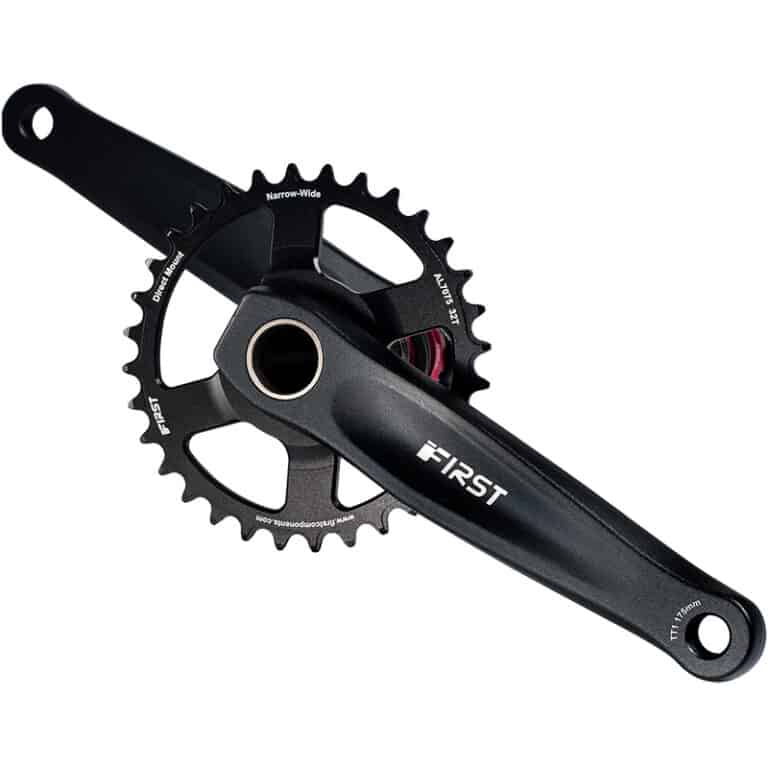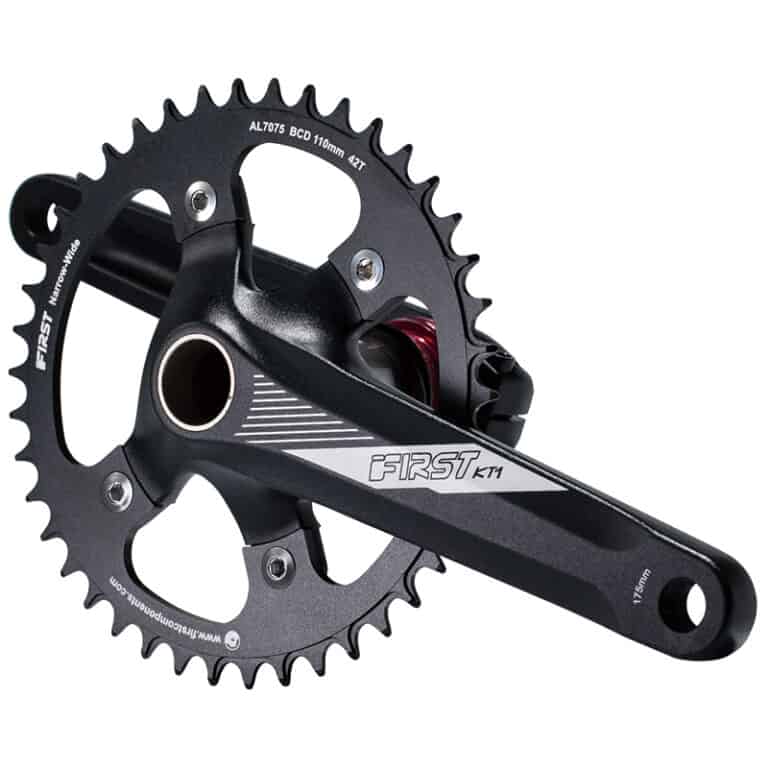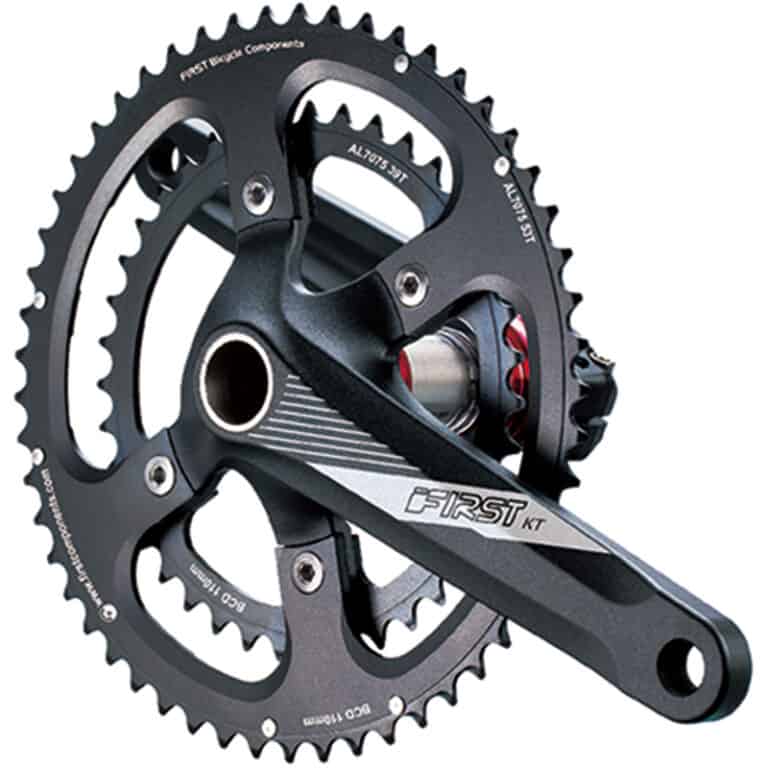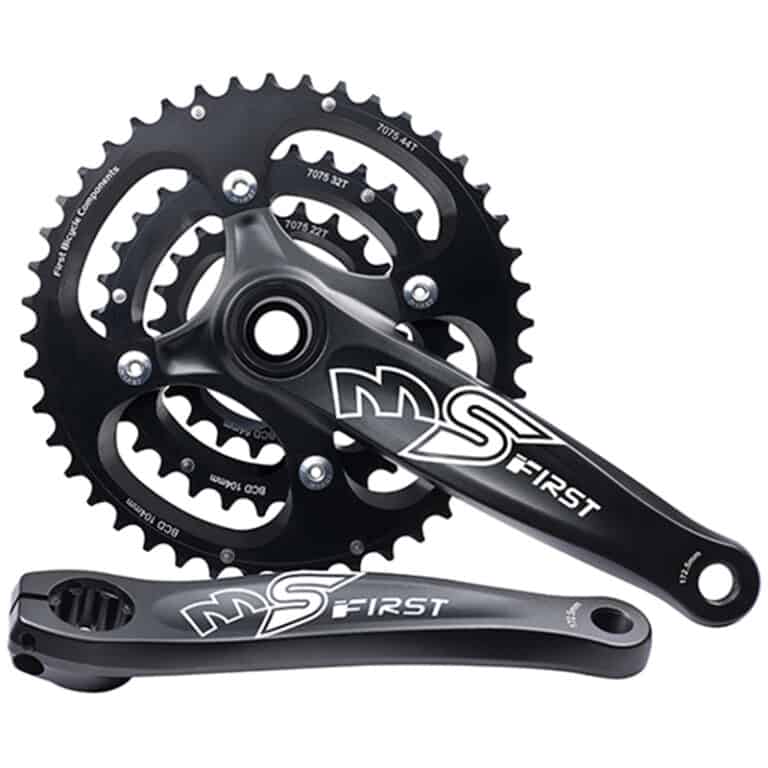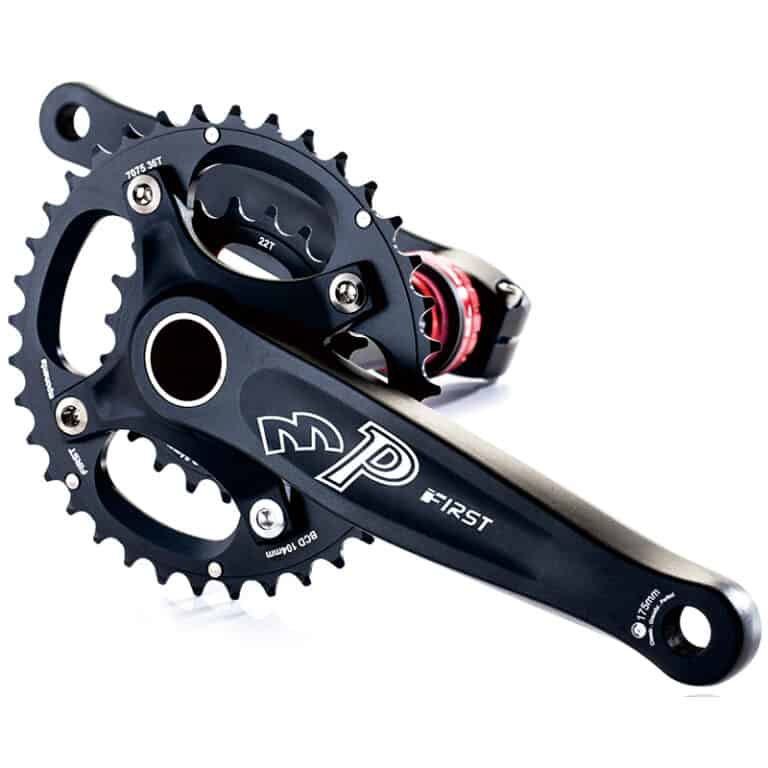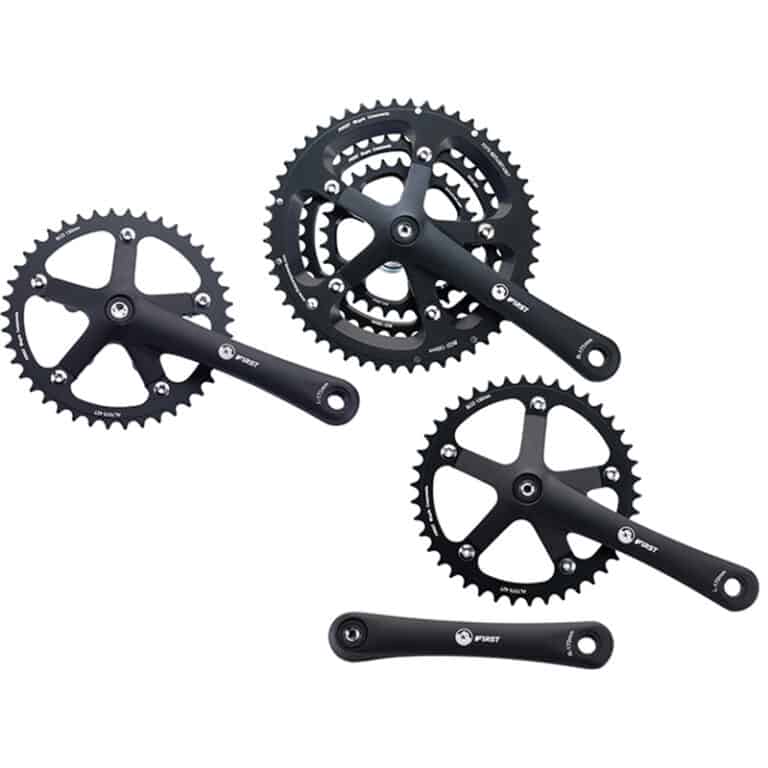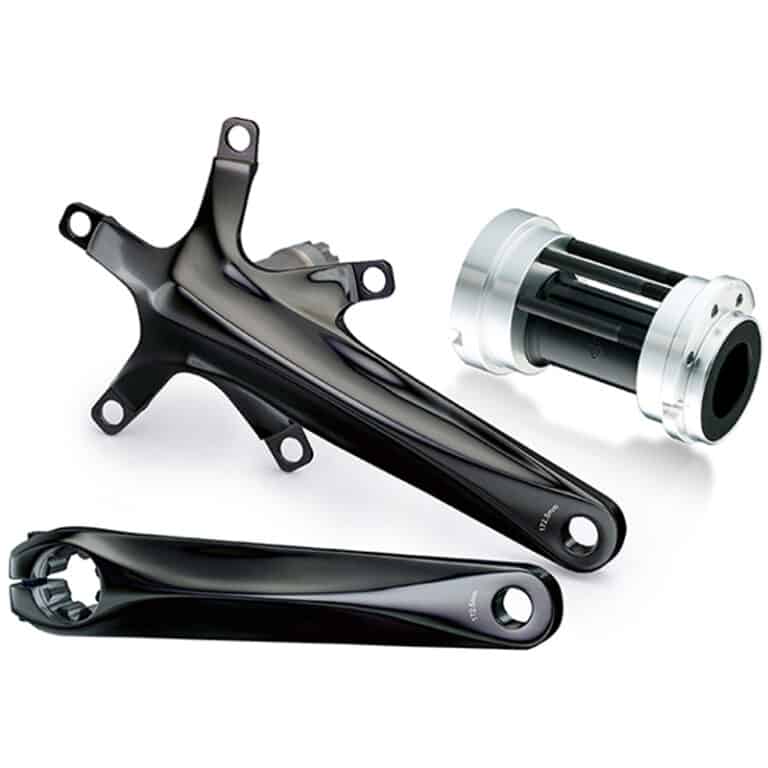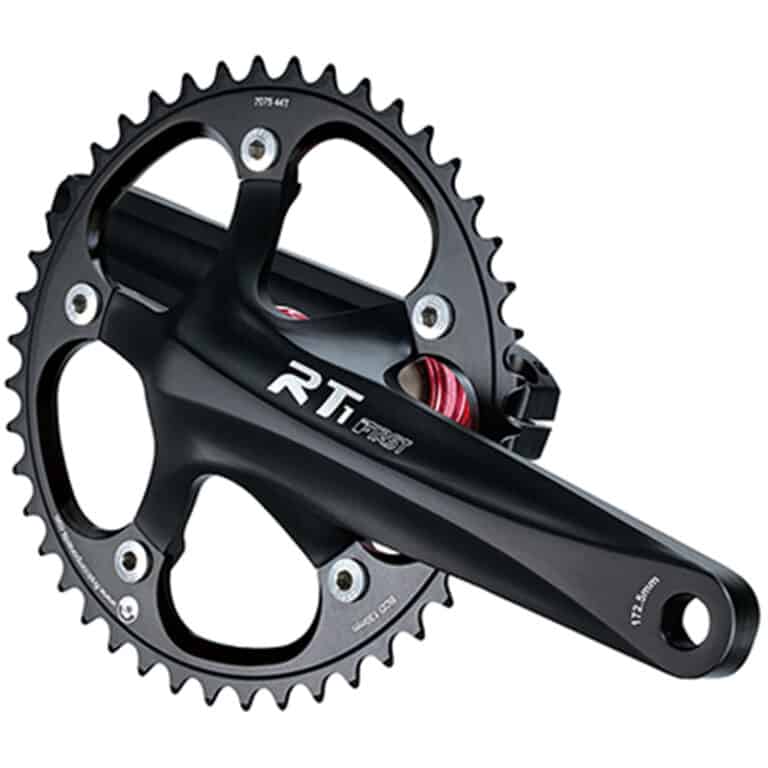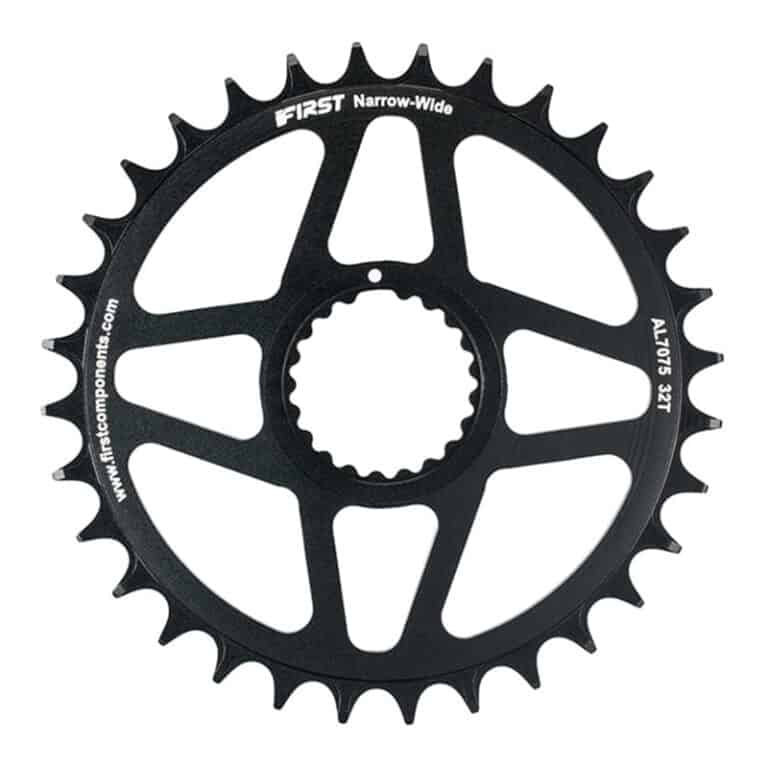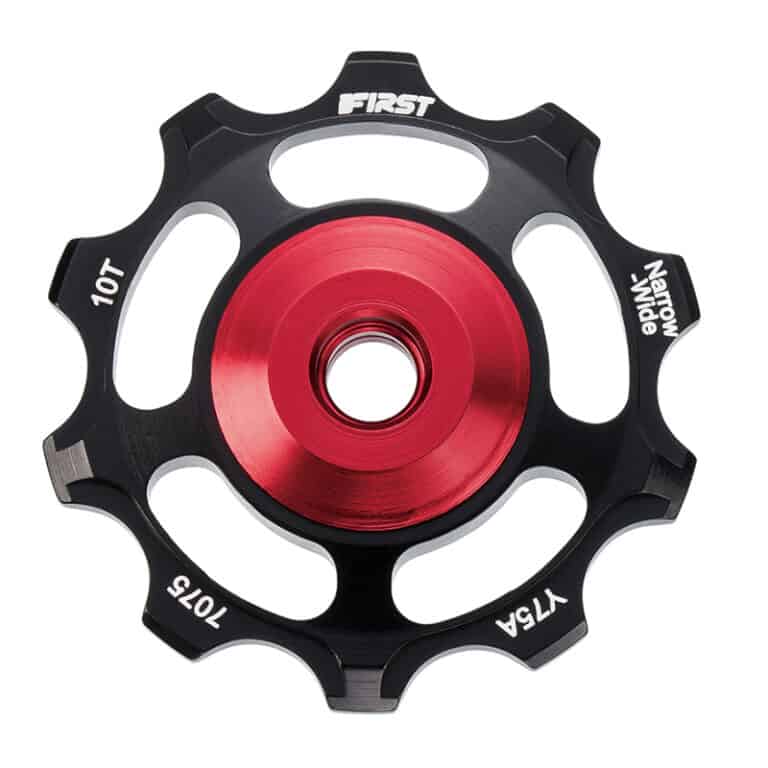In the USA we call them cranksets; in the UK they are called chainsets. Whatever we call them, the crankset is that part of a bicycle drivetrain that transmits power from a rider’s legs into the motion that drives the chain (or belt as is increasingly the case these days). This motion then turns the rear wheel.
The crank consists of between 1 and 3 sprockets, or chainrings attached to the cranks (sometimes referred to as “crankarms”, but “crank” is all you need to refer to them) to which the pedals attach. The crank connects to the bicycle frame through the bottom bracket, and to the rear sprockets (anywhere from 1 to 11 of these), “cassette” or “freewheel” by means of the chain.
Bicycle cranks come in a number of lengths that change relative to the preferences, bodily dimensions and different types of cycling modes or conditions. We measure the length of a crank as the distance between the center of the pedal spindle and the center of the bottom bracket spindle or axle. Remember, a spindle “spins”; an axle does not—bearings attached to it in some way rotate around it. (Best 10 MTB Cranksets)
The most common lengths are found between 165mm and 180mm. There is 2.5mm between each size, 170, 172.5, and 175mm are the most widely used. Common wisdom says that riders with shorter legs should use shorter cranks; those with longer legs, longer cranks. There is not a lot of science to back this up though. A confounding factor is that cyclists adapt to a crank length they are riding, so efficiency increases the longer they are riding. A commonly followed principle has been that shorter cranks are more suitable for high cadence cycling, such as criteriums for example, with longer cranks preferred for lower cadence cycling as you might find in time trials.
To make sense of the variety of First Components’ crank products, it helps to understand a little about the different types of cranks that exist. There are several means by which cranks are attached to a BB spindle or axle.
Cotter Pin
The cotter pin is the time-honoured method of attaching crank to spindle, and is mainly found at the lower end of the market or exclusive, classic bike builds.
Square Taper
The cotter pin was joined by the square taper, largely used on the entry-level models of middle-end bikes. The two standards that apply these days are Shimano and Campagnolo with either a diamond or a square orientation. Shimano uses JIS (adopted by most Asian-based manufacturers) and Campagnolo the ISO standard (adopted by most European manufacturers). An ISO spindle is longer with a marginally smaller taper end. The crank is mounted on the spindle, then the bolt is tightened which has the effect of pulling the crank onto the spindle. To remove, the bolt is loosened off then removed. The opening in the crank has threads into which a crank-pulling tool is screwed. The tool’s bit engages the spindle and turning it “pulls” the crank back off the spindle.
Splines
An advance on this design was the splined BB spindle. The most common standard is the ISIS (International Spline Interface Standard). Shimano’s Octalink is the most recognisable of these. The cranks are pressed into place and prevented from coming free via a bolt or nut installed into or onto the bottom bracket spindle. As with the square taper a crank puller is required to remove the cranks should you wish to work on the BB.
Integrated
The development of integrated cranks was aimed at simplifying the design and reducing weight. In this design, the spindle is no longer part of the bottom bracket, but attached to the crank. Shimano’s Hollowtech is a good example of this. The spindle is pushed through the BB with the left crank arm attached by means of two pinch bolts tightened to a moderate torque of 12-14 Nm. SRAM uses just the one bolt on a splined spindle. One bolt tightens to 48-54 Nm to hold the assembly together. The advent of press fit bottom brackets has seen this design continued.
Spider and Chainrings
A crank, whether it be an integrated design or not, consists of the “spider” with the crankarm all in one piece. The chainrings are attached to the spider’s “arms” (normally between 4 and 5) by means of small specially designed bolts. The size of these bolts are indicated by the BCD number, or Bolt Circle Diameter. This allows different sized chainrings to be used, within a range. Cranks with one or two chainrings will use a single BCD whereas a “triple” crankset will apply two different BCDs. Chainrings normally range from 20 teeth to as many as 60 teeth.
Mountain bike cranksets have three chainrings. Roadbikes commonly sported triple cranksets although these are becoming rare. Rear sprocket size has increased in the last few years and large sprockets (eg. 34T) and larger are becoming more and more common. In any case, the choice is often between a compact crankset (50T 34T/36T) and a standard (53T 39T) crankset. Large freewheel sprockets together with a compact crankset these days means a triple crankset is unnecessary.
.

